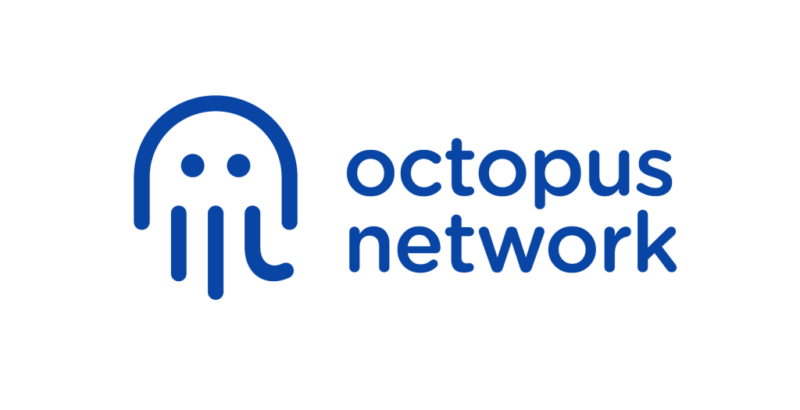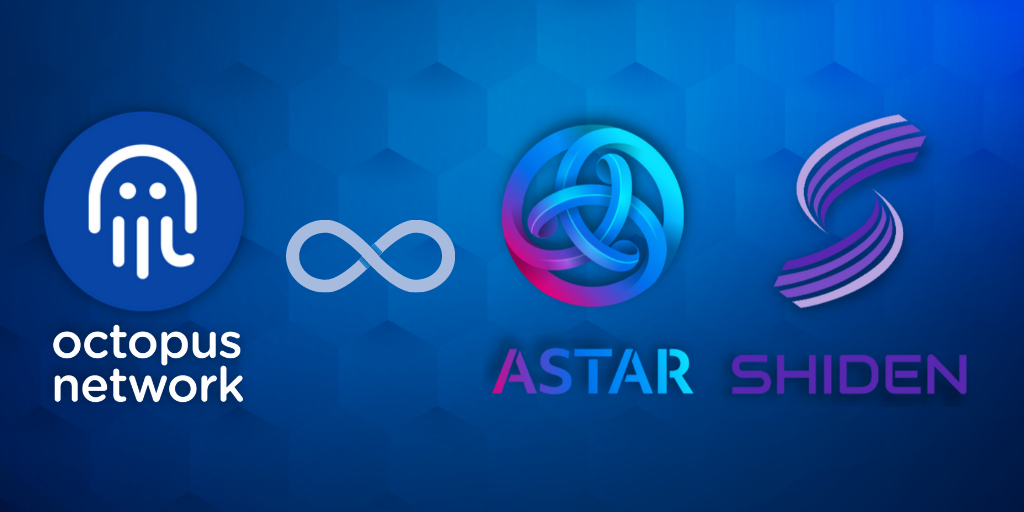Octopus Network, Ultimate Multi-Chain Network For Web3

TL;DR
- Octopus Network is multi-chain network designed for Web3 app chains.
- Octopus Network has unique feature of security, interoperability, and community.
Web3 is Inevitable
Web3 is inevitable. Web3 has some advantages compared to Web2 platforms. First, decentralized protocol eliminates the need for a middleman which makes it cost-efficient. Second, participants of the protocol get credit for their ownership and are rewarded for their contribution. This positive feedback makes the participation of users more active than incumbent Web2 platforms.
However…
However, still, Web2 platforms are dominating. Why? First, Web2 is relatively convenient and easy to use. Second, the value like ‘decentralized’, ‘censorship free’, ‘trustless’ is not that compelling from the user’s point of view.
Eventually, a good Web3 application should be a good web application in the first place. In other words, the Web3 application’s UX(User Experience) should be competent to rival Web2 application.
To Make Good Web3 Application
Until now, the main reason for the bad UX of Web3 applications is the complexity and cost of blockchain technology. To address this problem, several blockchain frameworks have emerged. Frameworks like Cosmos SDK and Substrate addresses complex consensus mechanism or security architecture which allows developers to focus on the front-end part of the application. Also, it offers multiple options for developers to customize the blockchain as they want.
App Chain vs Smart Contract
Some may question ‘Why should Web3 applications use an independent chain for them? Why not just use smart contract and deploy it on layer 1 as a dApp?’
The advantages of app chains over smart contracts are as follows.
First, performance issue. When we deploy our application on layer 1, we should share the transaction throughput with numerous other dApps that are deployed in the same chain. However, if we use our own chain, we can have our own validator set and have the high transaction processing power and fast finality.
Second, customizing is much easier. If we use an app chain, we can customize everything; governance structure, incentive model, consensus algorithm, etc. On the other hand, if we deploy our app on layer 1, there is a limit.
This does not mean that all Web3 applications should use the app chain. However, as the spectrum of Web3 applications diversifies, the number of applications requiring an app chain will increase.
Why We need Octopus Network
Then, why do we need Octopus Network when Polkadot and Cosmos already support a multi-chain ecosystem? This is because both are not specifically designed for app chains.
Polkadot is the most natural place for Substrate based chains, but still, it’s not for app chains. First, as Polkadot’s relay chain and Parachains share one security layer, each Parachain should pay for the consensus costs which are about tens of millions of dollars. For app chains, this cost is unaffordable.
For Cosmos Zones, developers should have PoS/Tendermint security and an active validator community from the beginning which is not only difficult but also cost-consuming. For bootstrapping, the project may use lots of native tokens and it may generate hyperinflation of tokenomics.
Octopus Network
Octopus Network is intentionally designed as a multi-chain network for app chains. Octopus Network is not a blockchain, it is an Octopus Relay which is a set of smart contracts deployed on NEAR blockchain. Like other blockchain frameworks, Octopus Network deals with complex infrastructure for app chains, which relieves the burden of developers of app chain.

Security
Appropriate Security
Existing app chains have two security solutions to implement. The first solution is using an independent PoS or PoW consensus mechanism. It’s easy to use, but maybe dangerous if there are lots of cross-chain transactions. The second one is Sharding. Polkadot and Ethereum 2.0 uses Sharding which the main chain and multiple side-chains share the security layer. The drawback of Sharding is that the cost for the shared security layer can be a burden for app chains.
Security always comes with the cost, so it’s not smart to have the best security level in every circumstance. What matters is the appropriate security. If the project is in the early days, the security level of the Ethereum network is too much and also accompanies an unnecessary cost. In the case of Polkadot, many Parachains have used their native tokens too much and caught into hyperinflation because of this reason.
Security Solution of Octopus Network
In Octopus Network, app chains can choose how much they will reward the validators for security, and $OCT holders choose which app chains will they stake. Each app chain gets the freedom to make a balance between cost and security.
Octopus Network uses LPoS(Leased PoS) consensus algorithm. In LPoS, token holder leases their token to other and get rewards. In the case of Octopus Network, $OCT holders lease their $OCT to app chains and get rewarded by their native tokens. LPoS has much scalability and flexibility compared to the Sharding model. Also, it is more cost-efficient because as Octopus Network is not a blockchain, it doesn’t need consensus cost, which makes the inflation rate of $OCT to 0.
What’s Great about 0 Inflation Rate
For app chain, when the inflation rate of token is 0, they only need to pay 3~5% interest to the borrowed $OCT. On the other hand, Parachains have to pay 20% interest to $DOT lenders because Polkadot itself gives 14% interest for staking. So, using Octopus Network is efficient for Web3 application teams.
Interoperability
Interoperability is the ability of different systems to exchange assets or data without tampering and maintaining their uniqueness. In the blockchain, interoperability is more about the ability of one chain’s event to change another chain’s state.
Main chain to App chain
Notary scheme, which is one of the well-known blockchain interoperability approaches, has the advantage of easy implementation but it needs a trusted third party. However, if we replicate the validator set of the target chain instead of an additional third party, we can somewhat decentralize the trust that we need. The reason we don’t use Relay is to avoid the complex trust and incentive issue related to the Relay solution.
App chain to Main chain
Unfortunately, in this case, we cannot use the Notary scheme. It’s because we cannot alter the protocol of the NEAR chain, which is the main chain. So, we have no choice to use relayers to update each app chain’s block header to Octopus Relay.
Furthermore
Furthermore, Octopus Network is planning to achieve interoperability between NEAR, Ethereum, Polkadot, and Cosmos. Since the days of Cdot, the predecessor of Octopus Network, this team has experience researching the connection between IBC and Substrate and other cross-chain mechanisms.
Moreover, in January, Octopus Network received a grant from Astar Network to build the first bridge between Parachain and IBC.

Community
The goal of Octopus community is to become a hub for the Web3 application.
How App Chains Can Join Octopus Network
But, yes, we cannot let any Web3 applications join Octopus Network. So, $OCT holders vote on which app chain to join Octopus Network.
- Any substrate based chain can apply to become Octopus app chain. Prerequisite is whitepaper about the spec and small amount of $OCT to prevent abusing.
- Members of Octopus community examines if the security is legit and logic matches the whitepaper.
- Projects who pass the examine stage becomes the candidate chain. $OCT holders can upvote or downvote on candidate chains. The most loved chain moves to staking stage.
- $OCT holders can stake on app chain and app chains which passed the threshold moves to next stage.
- Members of Octopus community operates the node inside the app chain and Octopus Network itself also runs the full node to offer the API access service to app chain. https://www.whisperingcreekdentistry.com/ Then, developers can just work on the front-end part and release it.
Octopus Accelerator Program

To foster the Octopus Network ecosystem, substrate developers are necessary. So, Octopus Network is planning to run an accelerator program that helps existing web developers and solidity developers to become substrate developers.
Wrap up
App chain specialized purpose is what makes Octopus Network distinguish from other incumbent multi-chain ecosystems. For Web3 applications to takeover Web2 platforms in each sector, a system that allows Web3 applications to easily onboard, such as Octopus Network, is essential.
Considering the recent IBC-Substrate bridge of Astar Network and $OCT’s inflation rate, I think Octopus Network has competitiveness compared to incumbent multi-chain solutions. Also, although Polkadot and Cosmos may be a strong competitor to Octopus Network, it is also positive that if interoperability is established, synergy can be created with each other.
Of course, NEAR blockchain’s market share and uncertainty of which dApps will use Octopus Network is the weak point. In the end, I think a number of people sympathizing with the value of Octopus Network and a number of killer dApps participating will greatly impact the success of Octopus Network.












